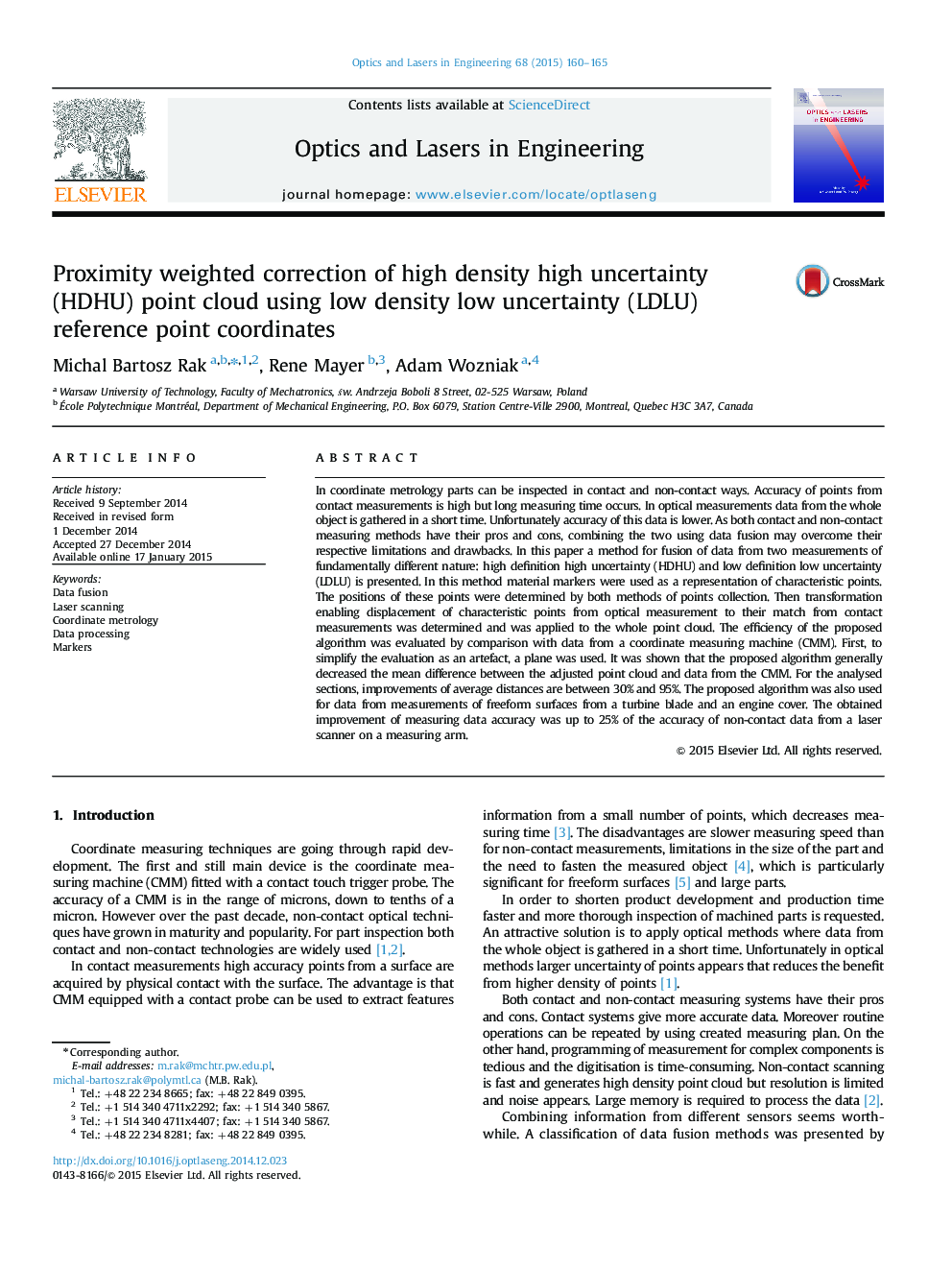| Article ID | Journal | Published Year | Pages | File Type |
|---|---|---|---|---|
| 743230 | Optics and Lasers in Engineering | 2015 | 6 Pages |
•A method of merging data from different sources is proposed.•Characteristic points in both sets of points were determined.•Ceramic balls were used as material markers.
In coordinate metrology parts can be inspected in contact and non-contact ways. Accuracy of points from contact measurements is high but long measuring time occurs. In optical measurements data from the whole object is gathered in a short time. Unfortunately accuracy of this data is lower. As both contact and non-contact measuring methods have their pros and cons, combining the two using data fusion may overcome their respective limitations and drawbacks. In this paper a method for fusion of data from two measurements of fundamentally different nature: high definition high uncertainty (HDHU) and low definition low uncertainty (LDLU) is presented. In this method material markers were used as a representation of characteristic points. The positions of these points were determined by both methods of points collection. Then transformation enabling displacement of characteristic points from optical measurement to their match from contact measurements was determined and was applied to the whole point cloud. The efficiency of the proposed algorithm was evaluated by comparison with data from a coordinate measuring machine (CMM). First, to simplify the evaluation as an artefact, a plane was used. It was shown that the proposed algorithm generally decreased the mean difference between the adjusted point cloud and data from the CMM. For the analysed sections, improvements of average distances are between 30% and 95%. The proposed algorithm was also used for data from measurements of freeform surfaces from a turbine blade and an engine cover. The obtained improvement of measuring data accuracy was up to 25% of the accuracy of non-contact data from a laser scanner on a measuring arm.
